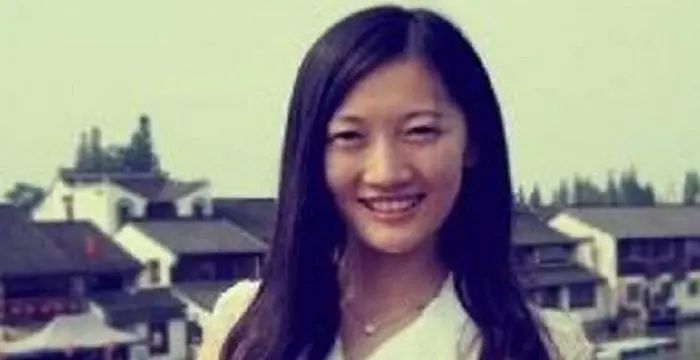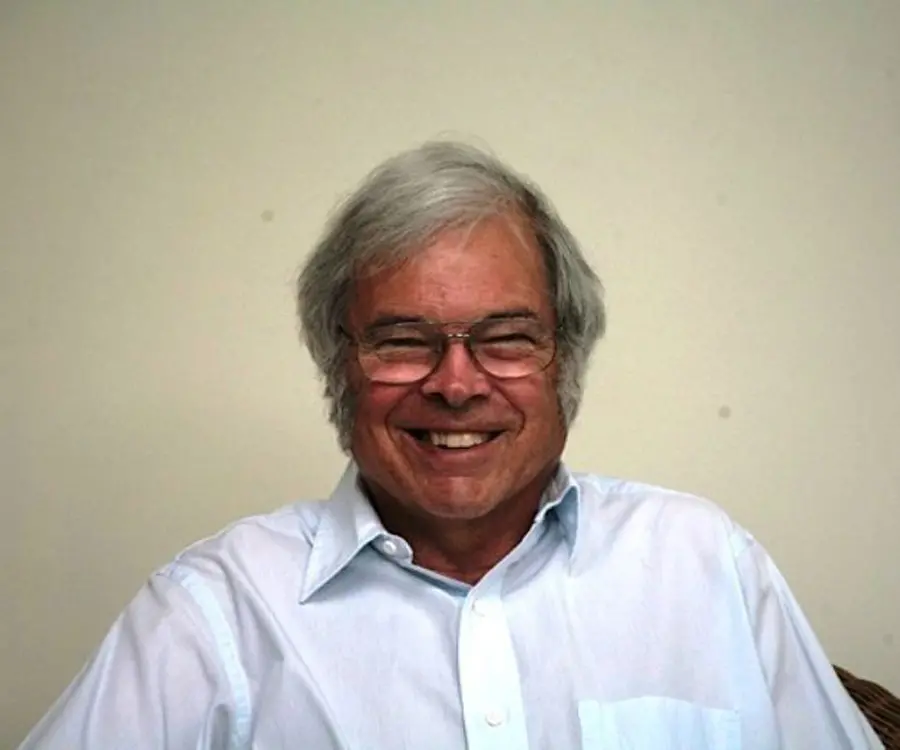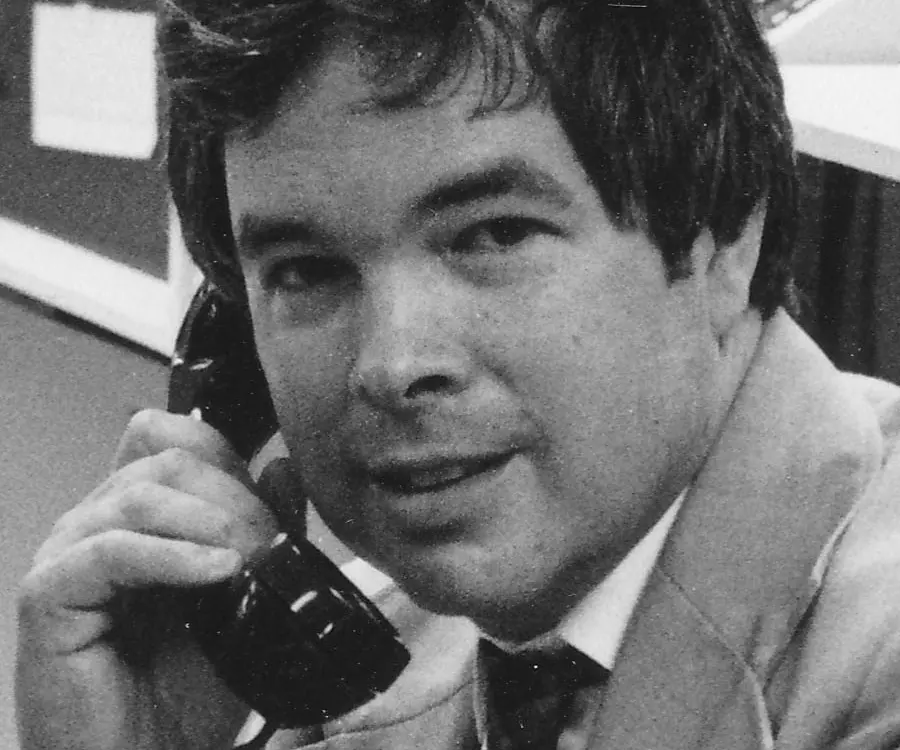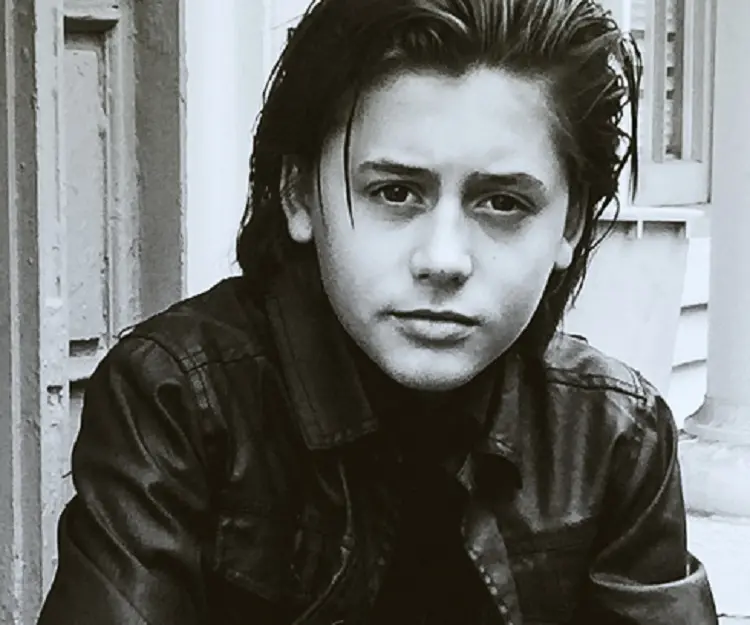
Kenneth G. Wilson - Scientists, Timeline and Family
Kenneth G. Wilson's Personal Details
Kenneth Geddes Wilson was an American theoretical physicist and a pioneer in leveraging computers for studying particle physics
| Information | Detail |
|---|---|
| Birthday | June 8, 1936 |
| Died on | June 15, 2013 |
| Nationality | American |
| Famous | Harvard University, Scientists, Physicists |
| Known as | Kenneth Wilson |
| Universities |
|
| Notable Alumnis |
|
| Birth Place | Waltham, Massachusetts |
| Gender | Male |
| Father | Edgar Bright Wilson |
| Sun Sign | Gemini |
| Born in | Waltham, Massachusetts |
| Famous as | Physicist |
| Died at Age | 77 |
// Famous Harvard University
Bertil Gotthard Ohlin
Bertil Gotthard Ohlin was a famous Swedish economist. This biography profiles his childhood, family life & achievements.
Xi Mingze
Xi Mingze is the daughter of Chinese Leader Xi Jinping, Check out this biography to know about her birthday, childhood, family life, achievements and fun facts about her.
Susan Sontag
Susan Sontag is an American critical essayist, cultural analyst, novelist, political activist, filmmaker and playwright of international repute. Read on to find out more about her childhood, career, profile and timeline.
Kenneth G. Wilson's photo
Who is Kenneth G. Wilson?
Kenneth Geddes Wilson was an American theoretical physicist and a pioneer in leveraging computers for studying particle physics. He was awarded the Nobel Prize in 1982 for his work on phase transitions, such as the transformation of a substance from the liquid to the gaseous state, like melting ice and emerging magnetism. It was embodied in his fundamental work on the renormalization group. Wilson was led to this breakthrough from his struggles with mysteries in elementary particle physics and quantum field theory. The tools Wilson brought to bear in his research were diverse, ranging from abstract mathematics to supercomputing. Wilson became a pioneer in the field of supercomputing, and was instrumental in the National Science Foundation’s establishment of five national scientific supercomputing centers, one of them at Cornell University.
// Famous Scientists
Juliane Koepcke
Juliane Koepcke is a German-Peruvian biologist, who was the lone survivor among the 92 passengers and crew of the ill-fated LANSA Flight 508 that crashed in the Peruvian rainforest on 24 December 1971. Know more about her life in this biography.
Henry Cavendish
Henry Cavendish was a theoretical chemist and physicist, renowned for discovery of hydrogen and calculation of the mass of earth. To know more about his childhood, profile, timeline and career read on
Konstantin Tsiolkovsky
Konstantin Tsiolkovsky was a Russian rocket scientist and a pioneer of astronautics. This biography provides detailed information about his childhood, family, personal life, career, achievements, etc.
Childhood & Early Life
Wilson was born in 1936 in Waltham, Massachusetts. His father, E. Bright Wilson Jr. was on the faculty in the Chemistry Department at Harvard University. His mother Emily Buckingham Wilson had done one year of graduate work in physics before her marriage.
His maternal grandfather was a professor of mechanical engineering at the ‘Massachusetts Institute of Technology’ while his paternal grandfather was a lawyer, and one time Speaker of the Tennessee House of Representatives.
He completed his schooling in Wellesley, Woods Hole, Massachusetts (second, third/fourth grades in two years), Shady Hill School in Cambridge (from fifth to eighth grade), ninth grade at the Magdalen College School in Oxford, England, and tenth and twelfth grades (skipping the eleventh) at the George School in eastern Pennsylvania.
Before the year in England, he learned the basic principle of calculus from the book ‘Mathematics and Imagination’ by Kasner and Newman, and went on to work through a calculus text.
Around this time he decided to become a physicist. In 1952 he entered Harvard. He majored in mathematics, but studied physics. During his Harvard stint he participated in the ‘Putnam Mathematics competition’.
His pursued his graduate studies at the ‘California Institute of Technology’. At Caltech he befriended Jon Mathews, a junior faculty member who taught Wilson how to use the computer.
He spent two years in the Kellogg Laboratory of nuclear physics, gaining experimental experience while taking theory courses.
He then worked on a thesis for Murray Gell-Mann who himself was a Nobel Prize Winner Physicist.
Wilson had spent a summer at the ‘General Atomic Company’ in San Diego working with Marshall Rosenbluth in plasma physics.
After his third year he went off to Harvard to be a Junior Fellow. During the first year of the fellowship he went back to California Institute of Tech. for a few months to finish his thesis.
Career
In 1962, Wilson joined CERN for a year, first for his Junior Fellowship and then as a ‘Ford Foundation Fellow’.
In September of 1963, he came to ‘Cornell University’ as an Assistant Professor. He was then promoted as an Associate Professor in 1965 and in 1971 he became a Full Professor. In 1974, he became ‘the James A. Weeks’ Professor at the University. He remained at Cornell ever since.
During 1969 - 70 he worked at the Stanford Linear Accelerator Center,
In 1972 he worked at the ‘Institute for Advanced Study’ in Princeton, then in 1976 at the ‘California Institute of Technology’ as a ‘Fairchild Scholar’, and in 1979 - 80 at the ‘IBM Zürich Laboratory’.
Together with Douglas Von Houweling, then ‘Director of Academic Computing’ and Geoffrey Chester of the Physics Department, Wilson initiated a computing support project based on a ‘Floating Point Systems Array Processor’.
Wilson researched extensively on elementary particle theory. In 1964 he presented ‘a short distance expansion for operator products’ in a paper. He discussed ‘how the renormalization group might apply to strong interactions’ in a paper in 1969.
He researched to unlock the potential of the renormalization group approach in other areas of classical and modern physics. He continued to work on statistical mechanics, specifically, the ‘Monte Carlo Renormalization Group’, applied to the ‘three dimensional Ising model’.
In 1987 Wilson left Cornell for Ohio State University, where he helped found the ‘Physics Education Research Group’. In Ohio, he focused on physics and science education.
Major Works
His work in physics involved formulation of a comprehensive theory of scaling: how fundamental properties and forces of a system vary depending on the scale over which they are measured.
Wilson’s Nobel Prize-winning research stemmed from work on phase transitions by Michael Fisher and Benjamin Widom at Cornell and Leo Kadanoff at the ‘University of Illinois’. Their findings motivated Wilson to ask whether his own work on quantum fields would be amenable to a similar approach, for all of these phenomena involve huge numbers of variables describing a wide range of length scales.
Following this work on phase transitions, Wilson turned again to quantum field theory and quantum chromodynamics (QCD), the newly proposed theory that protons, neutrons and other subatomic particles are composed of smaller particles called quarks. He created a version of QCD on a space-time lattice that made it possible for the first time to analyze the very strong forces that bind quarks together.
Awards & Achievements
In 1975, he was elected to the ‘National Academy of Sciences’ and ‘the American Academy of Arts and Sciences’.
In 1980 he was awarded Israel’s ‘Wolf Prize’ in Physics and an ‘honorary Doctorate of Science’ from Harvard University in 1981.
In 1984, he was elected to ‘the American Philosophical Society’.
Wilson became the Director of ‘the Center for Theory and Simulation in Science and Engineering’ (Cornell Theory Center) - one of five national supercomputer centers created by the ‘National Science Foundation’ in 1985.
In 1988, he became the ‘Hazel C. Youngberg Trustees Distinguished Professor’ at The Ohio State University's Department of Physics.
He was engaged in educational reform as a ‘Co-Principal Investigator’ on Ohio's ‘Project Discovery’, one of the National Science Foundation's Statewide Systemic Initiatives.
His other awards include the ‘A.C. Eringen Medal’, the ‘Franklin Medal’, the ‘Boltzmann Medal’, and the ‘Dannie Heinemann Prize’.
Personal Life & Legacy
In 1975 he met Alison Brown who was working for Cornell Computer Services. They got married in 1982.
He died at Saco, Maine, U.S. on June 15 from lymphoma complications. He was 77.
Trivia
He found high school boring and dull.
He loved to play oboe and he was a good athlete. He had represented Harvard for marathons.
Folk dance was Wilson’s hobby. Cornell University had a reputed folk dancing group. This was one of the reasons behind him accepting Cornell University’s offer of professorship.
// Famous Physicists
Henry Cavendish
Henry Cavendish was a theoretical chemist and physicist, renowned for discovery of hydrogen and calculation of the mass of earth. To know more about his childhood, profile, timeline and career read on
Walter Kohn
Nobel Laureate Walter Kohn was an Austrian-born American theoretical chemist and physicist. Check out this biography to know about his childhood, life, achievements, works & timeline.
Nikola Tesla
Nikola Tesla was a Serbian-American inventor, best known for his development of alternating current electrical systems. This biography of Nikola Tesla provides detailed information about his childhood, life, achievements, works & timeline.
Kenneth G. Wilson biography timelines
- // 1936Wilson was born in 1936 in Waltham, Massachusetts. His father, E. Bright Wilson Jr. was on the faculty in the Chemistry Department at Harvard University. His mother Emily Buckingham Wilson had done one year of graduate work in physics before her marriage.
- // 1952Around this time he decided to become a physicist. In 1952 he entered Harvard. He majored in mathematics, but studied physics. During his Harvard stint he participated in the ‘Putnam Mathematics competition’.
- // 1962In 1962, Wilson joined CERN for a year, first for his Junior Fellowship and then as a ‘Ford Foundation Fellow’.
- // 1964 To 1969Wilson researched extensively on elementary particle theory. In 1964 he presented ‘a short distance expansion for operator products’ in a paper. He discussed ‘how the renormalization group might apply to strong interactions’ in a paper in 1969.
- // 1969 To 1970During 1969 - 70 he worked at the Stanford Linear Accelerator Center,
- // 1975In 1975, he was elected to the ‘National Academy of Sciences’ and ‘the American Academy of Arts and Sciences’.
- // 1975 To 1982In 1975 he met Alison Brown who was working for Cornell Computer Services. They got married in 1982.
- // 1980 To 1981In 1980 he was awarded Israel’s ‘Wolf Prize’ in Physics and an ‘honorary Doctorate of Science’ from Harvard University in 1981.
- // 1984In 1984, he was elected to ‘the American Philosophical Society’.
- // 1985Wilson became the Director of ‘the Center for Theory and Simulation in Science and Engineering’ (Cornell Theory Center) - one of five national supercomputer centers created by the ‘National Science Foundation’ in 1985.
- // 1987In 1987 Wilson left Cornell for Ohio State University, where he helped found the ‘Physics Education Research Group’. In Ohio, he focused on physics and science education.
- // 1988In 1988, he became the ‘Hazel C. Youngberg Trustees Distinguished Professor’ at The Ohio State University's Department of Physics.
// Famous Gemini Celebrities peoples
Wentworth Miller
Wentworth Miller is an American actor and screenwriter who achieved recognition for his role in the TV series ‘Prison Break’.
Joyce Meyer
Joyce Meyer is a Christian author and speaker. This biography provides detailed information about her childhood, life, achievements, works & timeline
Zoe LaVerne
Zoe LaVerne is an American musical.ly star. Check out this biography to know more about her family, personal life, including her age, birthday, etc.
WolfieRaps
Check out all that you wanted to know about WolfieRaps, the famous YouTube Personality; his birthday, his family and personal life, his girlfriends, fun trivia facts and more.
Adam Saleh
Check out all that you wanted to know about Adam Saleh, the famous YouTube Personality; his birthday, his family and personal life, his girlfriends, fun trivia facts and more.
Isaak Presley
All about American actor and singer Isaak Presley including his age, birthday, family life, girlfriends, net worth, and some fun facts.
Kenneth G. Wilson's FAQ
What is Kenneth G. Wilson birthday?
Kenneth G. Wilson was born at 1936-06-08
When was Kenneth G. Wilson died?
Kenneth G. Wilson was died at 2013-06-15
Where was Kenneth G. Wilson died?
Kenneth G. Wilson was died in Saco, Maine, U.S.
Which age was Kenneth G. Wilson died?
Kenneth G. Wilson was died at age 77
Where is Kenneth G. Wilson's birth place?
Kenneth G. Wilson was born in Waltham, Massachusetts
What is Kenneth G. Wilson nationalities?
Kenneth G. Wilson's nationalities is American
What was Kenneth G. Wilson universities?
Kenneth G. Wilson studied at Harvard University, 1961 - California Institute of Technology, Harvard University
What was Kenneth G. Wilson notable alumnis?
Kenneth G. Wilson's notable alumnis is Harvard University
Who is Kenneth G. Wilson's father?
Kenneth G. Wilson's father is Edgar Bright Wilson
What is Kenneth G. Wilson's sun sign?
Kenneth G. Wilson is Gemini
How famous is Kenneth G. Wilson?
Kenneth G. Wilson is famouse as Physicist















